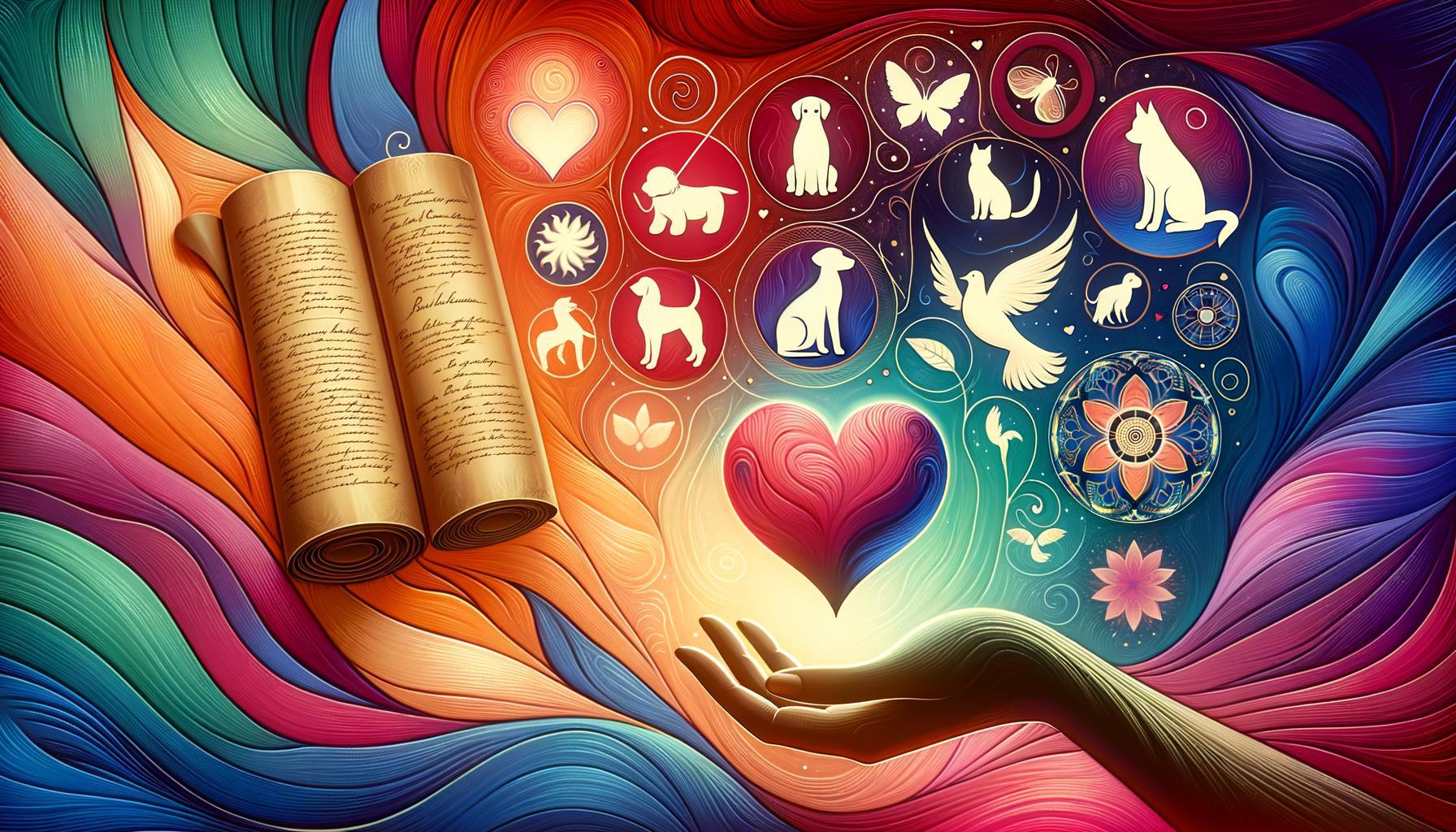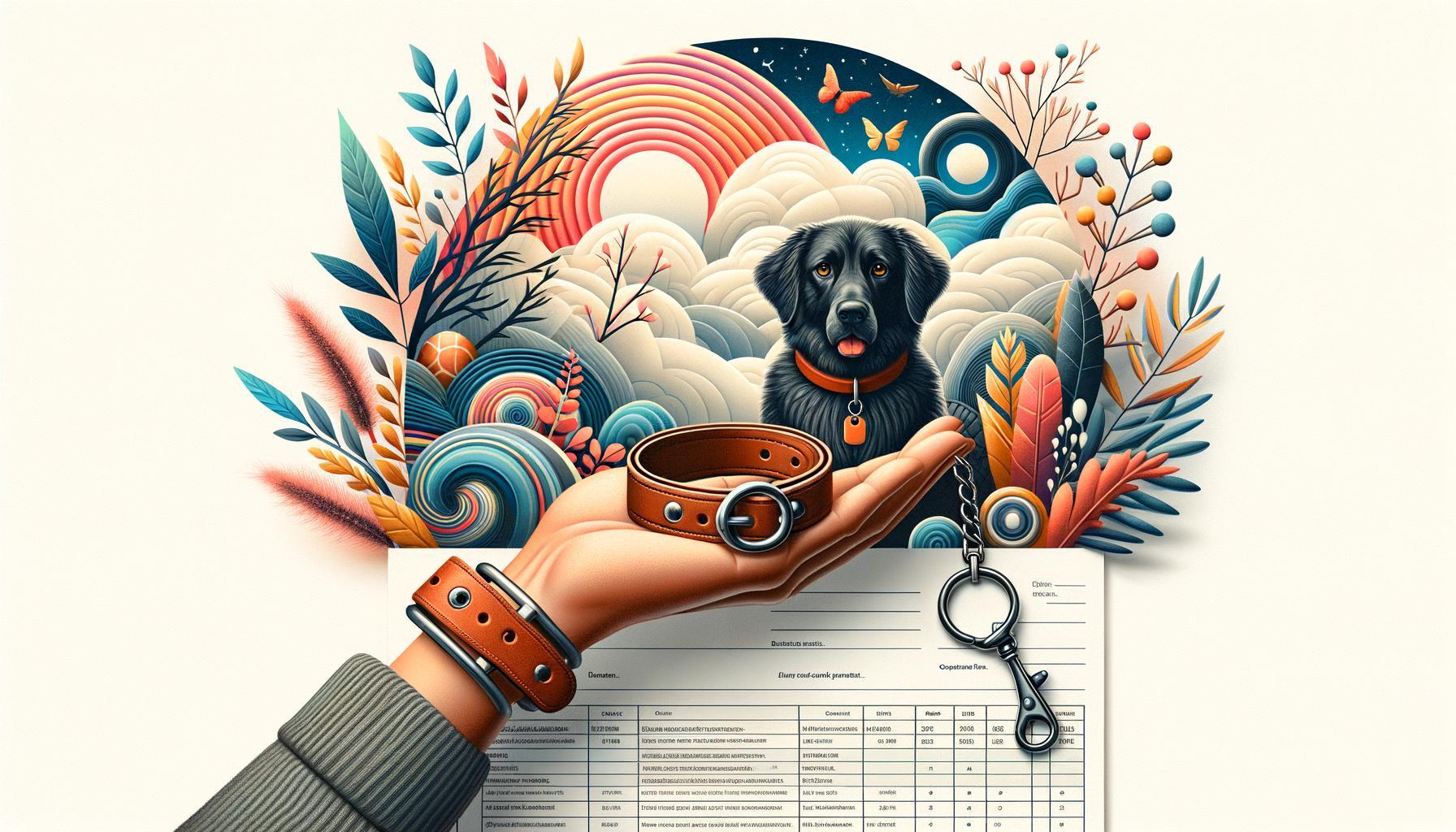In a world where the complexities of human emotion are as varied as the colors of a sunset, the bond between animals and humans has emerged as a beacon of comfort and solace. Amid the cacophony of daily life, emotionally attuned animals have silently woven themselves into the fabric of our well-being, offering a unique kind of support that transcends words. But where do these intuitive companions come from? How did they transition from beloved pets to recognized emotional lifelines? The tale of emotional support animals (ESAs) is one that threads through centuries of human history, marked by evolving understandings, shifting societal norms, and deeply personal stories. Join us as we unravel the origins of emotional support animals, tracing their journey from the annals of time to the heart of contemporary mental health care.
Table of Contents
- Early Companionship: Ancient Bonds Between Humans and Animals
- From Therapies to Therapets: The Evolution of Animal-Assisted Interventions
- Legislation and Recognition: The Journey to Legal Acceptance
- The Role of Emotional Support Animals in Modern Society
- Choosing the Right Support: Recommendations for New ESA Owners
- The Future of Emotional Support Animals: Trends and Innovations
- Concluding Remarks
Early Companionship: Ancient Bonds Between Humans and Animals
What we now call emotional support animals have their origins deeply rooted in the early days of human civilization. Early humans formed bonds with animals not just out of necessity for survival but for **companionship**, mutual protection, and even spiritual connection. Evidence from ancient cave paintings, burial sites, and artifacts suggests these early communities cherished animals, often depicting them alongside family and clan members. The prehistoric bond with dogs, for instance, went beyond hunting partnerships; they were seen as loyal protectors, ensuring the safety of their human counterparts both in life and death.
A look through history reveals just how integral animals have been in various civilizations as sources of **comfort and emotional support**. In ancient Egypt, cats were revered not only for their ability to deter pests but also for their calming presence. Similarly, the companionship of horses offered a therapeutic experience for Greek soldiers who sought solace after battles. These ancient bonds are not just historical footnotes; they laid the groundwork for the modern understanding of the emotional and psychological benefits provided by animal companionship. Consider the significant milestones in this journey:
- 12,000 BC: Domestication of Dogs
- 3,000 BC: Sacred Cats of Egypt
- 400 BC: Horses as Companions in Greek Culture
From Therapies to Therapets: The Evolution of Animal-Assisted Interventions
The practice of animal-assisted interventions (AAI) dates back centuries, with studies revealing that ancient civilizations often included animals in their healing rituals. These interactions were based on the belief that animals possessed mystical or cleansing properties. Over time, the therapeutic use of animals evolved, becoming more structured and formalized with the emergence of modern psychology and medicine. **World War II** witnessed one of the earliest documented uses of dogs for emotional support when soldiers suffering from shell shock found comfort in the presence of specially trained dogs. This laid the groundwork for present-day emotional support animals (ESAs).
Fast forward to the 1960s, child psychologist **Boris Levinson** unexpectedly discovered that his therapy dog, Jingles, had a profound positive impact on his young patients. He coined the term ”pet therapy” and observed significant improvements in children who interacted with Jingles during their sessions. From this foundation, different forms of animal-assisted interventions emerged:
- Animal-Assisted Therapy (AAT): Directed by healthcare professionals.
- Animal-Assisted Activities (AAA): General interaction without specific therapeutic goals.
- Emotional Support Animals (ESAs): Animals that provide comfort with minimal training.
This evolution continues today, blending traditional practices with scientific research to enhance the mental and emotional well-being of individuals across diverse demographics.
| Therapy Type | Description |
|---|---|
| AAT | Structured interventions with specific goals. |
| AAA | General activities to improve quality of life. |
| ESA | Companions providing emotional comfort. |
Legislation and Recognition: The Journey to Legal Acceptance
The intricate journey of Emotional Support Animals (ESAs) toward formal recognition and legal acceptance has been a tapestry woven from both societal necessity and compassionate understanding. Initiatives began with the **Air Carrier Access Act (ACAA)** of 1986, which provided initial protection for the rights of individuals needing assistance animals in air travel. Following this, the **Fair Housing Amendments Act (FHAA)** of 1988 made it unlawful to deny housing to individuals with disabilities who require the support of ESAs. These legislative landmarks formed the cornerstone of a more inclusive national policy aimed at acknowledging the vital mental health benefits provided by these animals.
- 1986: Air Carrier Access Act (ACAA)
- 1988: Fair Housing Amendments Act (FHAA)
The path didn’t stop there—over the subsequent decades, further policies were refined to balance the protection of individuals with disabilities and the practical concerns of businesses and public spaces. In particular, the **Americans with Disabilities Act (ADA)**, revised in 2010, provided additional clarity by specifying the types of animals allowed and emphasizing the importance of documentation. This evolving landscape encapsulates a dynamic dialogue between advocates, lawmakers, and the public, reflecting the growing acceptance and understanding of the role ESAs play in mental health and well-being.
| Legislation | Year |
|---|---|
| Air Carrier Access Act | 1986 |
| Fair Housing Amendments Act | 1988 |
| Americans with Disabilities Act (Revised) | 2010 |
The Role of Emotional Support Animals in Modern Society
The concept of animals providing emotional support has always been woven into the fabric of human society, but their formal recognition is a more recent phenomenon. In earlier centuries, pets were cherished for their companionship, yet it wasn’t until the mid-20th century that scientists and mental health professionals began to systematically explore the therapeutic benefits of animals. This evolution saw domesticated animals promoted from mere companions to integral parts of human emotional well-being. Institutions started acknowledging how the mere presence of these animals could bring solace, reduce anxiety, and alleviate symptoms of various psychological conditions. Fast forward, and legislative milestones in the 1980s and 90s fortified the standing of **Emotional Support Animals (ESAs)**, granting them certain rights under laws like the Fair Housing Amendments Act and the Air Carrier Access Act.
- Providing comfort and alleviating stress
- Offering non-judgmental companionship
- Assisting in the management of emotional disorders
The increased recognition brought forward particular responsibilities and challenges. Advances in understanding our symbiotic relationship with animals led to specialized training programs for both **handlers and their ESAs**. This new dimension also raised the need for clear distinctions between ESAs and other service animals, establishing unique guidelines for their usage and rights. To clarify, below is a simple comparative table highlighting key differences:
| Aspect | ESAs | Service Animals |
|---|---|---|
| Purpose | Emotional support | Physical assistance |
| Training | Basic obedience | Specialized task training |
| Legal Protections | Housing and air travel | Comprehensive public access |
The societal integration of ESAs not only fosters a compassionate culture towards those requiring emotional care but also encourages a broader discourse on mental health and animal welfare.
Choosing the Right Support: Recommendations for New ESA Owners
When diving into the world of Emotional Support Animals (ESAs), choosing the right type of support to enhance your well-being is paramount. With a multitude of options, one has to consider both the nature of the animal and their personal needs. **Dogs**, for instance, are popular due to their loyalty and ease of training, while **cats** offer a more independent kind of comfort without demanding constant attention. Other options include rabbits, birds, and even reptiles. Each of these animals provides unique benefits that can cater to different emotional needs.
Here are some factors to keep in mind when choosing an ESA:
- **Temperament:** Consider the animal’s natural behavior and how it aligns with your emotional requirements.
- **Size:** Smaller animals like cats or rabbits might be better suited for apartment living.
- **Lifestyle Compatibility:** Active individuals might benefit from dogs, while those seeking tranquility might prefer a more low-key animal.
- **Allergies:** Ensure you or other household members are not allergic to your chosen ESA.
| Animal Type | Benefits | Best For |
|---|---|---|
| Dogs | Companionship, loyalty, can be trained for specific needs | Active lifestyles, consistent companionship seekers |
| Cats | Independent, easy to care for, calming presence | Apartment dwellers, those who prefer independence |
| Rabbits | Quiet, gentle, easy to bond with | Calm households, those with limited space |
The Future of Emotional Support Animals: Trends and Innovations
The landscape of emotional support animals (ESAs) is evolving rapidly, with a myriad of **trends and innovations** transforming how we interact with these compassionate companions. From advancements in **genetic selection and breeding** aimed at optimizing temperament and compatibility to the integration of *technology-enhanced caregiving*, ESAs are becoming more adept at supporting their humans emotionally. One burgeoning trend is the **utilization of artificial intelligence (AI)** to better understand and respond to the needs of both the animal and the owner. AI-driven devices and apps can monitor emotional states, ensuring that the support provided by the animal is timely and effective.
Further, the expansion in the types of animals recognized as ESAs is noteworthy. Beyond traditional choices like dogs and cats, **miniature horses, rabbits, and even birds** are now filling these roles. The development of **customized training programs** is also on the rise. These programs are tailored not only to the species but also to the individual animal, ensuring that their response to their human’s emotional states is nuanced and highly effective. To capture these shifts, consider the following emerging trends:
- Genetic Selection and Breeding
- AI-driven Caregiving Tools
- Diverse Animal Selection
- Customized Training Programs
| Trend | Impact |
|---|---|
| Genetic Breeding | Optimal Temperament |
| AI Tools | Enhanced Responsiveness |
| Diverse Species | Broader Support Options |
| Custom Training | Specialized Care |
Concluding Remarks
As our journey through the rich tapestry of the origins of emotional support animals reaches its conclusion, we find ourselves standing at a unique crossroads where history embraces modernity. From ancient civilizations recognizing the calming presence of animals, to contemporary society formalizing the bond with legal structures and psychological insights, the evolution of emotional support animals is nothing short of extraordinary.
These co-travelers, whose roles have morphed from silent companions to recognized caregivers, illuminate our intrinsic need for connection and healing. It’s a testament to the age-old symbiosis between humans and animals, proving that in the quiet understanding of a faithful companion, we often find the echo of our own unspoken emotions.
As we step back from this historical lens, let us appreciate not just the journey of recognition and acceptance, but the unwavering, timeless companionship that emotional support animals offer. In their presence, whispers of the past and hopes for the future coalesce, embodying a sanctuary of serenity in our ever-evolving world.







Leave a Reply